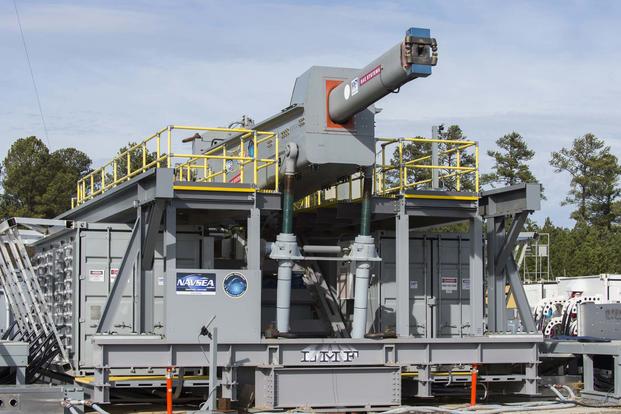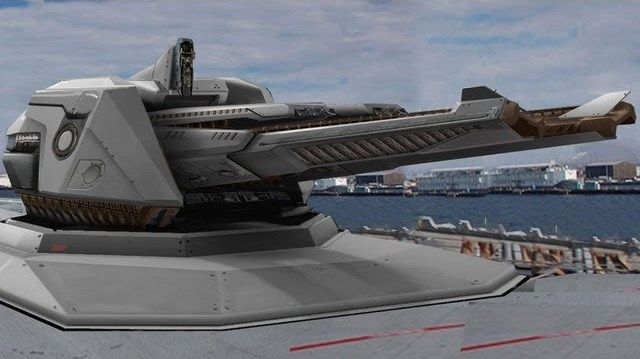The arrival in Europe of black powder, a highly explosive and exothermic mixture of sulfur, saltpeter (potassium nitrate) and charcoal, introduced by the Mongols in the 13th century, but used in China since the 7th century, led to a rapid and profound upheaval in military technologies, as well as tactics and strategies.
Ballistas and Scorpions were quickly replaced by cannons and bombards, as soldiers traded off their crossbows and bows for the first portable firearms, bringing more than 2000 years of military technology to an end in just two centuries.
In this section:
800 years later, gunpowder continues to be at the heart of modern engagements, forming part of almost all combat equipment, ranging from the infantryman's assault rifle or combat aircraft's on-board cannon, to artillery systems. , whether naval or land. But the progress made in recent years in the mastery of electromagnetism could well prove to be as revolutionary for armies as was the arrival of black powder, the internal combustion engine or the first transistor.

What is electromagnetism?
Electromagnetism is one of the four elementary interactions identified by modern physics, with the strong interaction, which allows matter to exist, the weak interaction, which generates radioactivity and beta rays, and gravity, known from all. It is also one of the most powerful, because if it is 100 times weaker than the strong interaction, it remains 1000 times more powerful than the weak interaction, and 10 (power) 36 stronger than gravity.
It is based on the interactions and forces that apply between electrically charged particles. Without going into details, it is this force which is, among other things, at the heart of all electric motors or generators, but also radio waves, light or the functioning of compasses.
The technological and theoretical progress made in recent years now makes it possible to take a new step, opening the way to new military applications capable of profoundly and lastingly transforming equipment and doctrines.
Electromagnetic Cannons
The principle of the electromagnetic cannon is relatively simple: rather than propelling the projectile by the increase in pressure generated by the combustion of powder in the breech of a cannon, the projectile is accelerated by a very powerful electromagnetic field. There are actually not one, but two electromagnetic gun technologies:
- le magnetic gun, or Gauss gun, uses the magnetic field created by coils surrounding the gun to accelerate an electrically charged projectile, either by attraction or repulsion. This technology has been tested since the beginning of the century, but presents numerous constraints. On the other hand, a similar technology is used for the EMALS electromagnetic catapults of the American aircraft carrier USS Gerald Ford, and the future French aircraft carrier PANG.
- Le electric cannon, or railgun, uses Laplace's law, exploiting the force created by a magnetic field on an electrical conductor. Two rails create opposing magnetic fields, and propel the conductor which closes the circuit between the two circuits. Those who have completed a BAC in Science will remember the force oriented according to the magnetic field and the direction of the current, and represented by the famous “three fingers of the right hand”.
It is obviously the electric gun which, today, concentrates most of the research. Thus, US Navy tests during the 2010s made it possible to achieve a muzzle exit speed greater than Mach 7 to hit a 5 m² target at 160 km.
Engineers also estimate that by reaching a speed of Mach 10, it would be possible to reach targets nearly 400 km away. China created a surprise in 2018 in this area when photos of a railgun mounted on a tank transport ship were leaked.
Later, Beijing confirmed that it was indeed a question of testing a Railgun model, and that the first naval units equipped with this gun, perhaps the second generation of Type 055 cruisers, would enter service in 2025, without the We have since been able to confirm these assertions by any visual observations.

In addition to its significant range, the Railgun also induces a very high release of kinetic energy on impact, making it possible to create very serious damage on the target, without using explosives. On the other hand, its high initial speed makes it a weapon suitable for anti-missile warfare, even to counter hypersonic weapons. However, the technology has some drawbacks that are hard to ignore.

The rest of this article is for subscribers only
The Classic subscriptions provide access to
all articles without advertising, starting at € 1,99.
Newsletter subscription
Register for the Meta-Defense Newsletter to receive the
latest fashion articles daily or weekly

